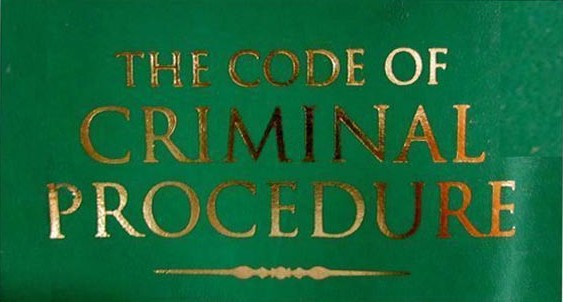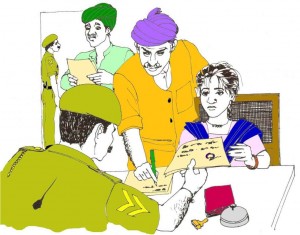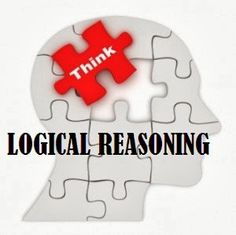In this blogpost, Amoolya Narayan, an Associate at Economic Laws Practice (ELP) and a former student of West Bengal National University of Juridical Sciences, gives a rudimentary yet comprehensive idea about the Criminial Procedure Code in India and attempts to cover the entire procedure of trying a criminal offence. Amoolya has included an enjoyable exercise for the readers as well.
Why do we need Criminal Procedure Law?
Anyone who has a rudimentary knowledge of criminal law will know that it deals with what amounts to an offence and what are the penalties associated with such offences. However, the nature of most criminal punishment is such that it confines the individual liberty of a person. Imprisonment, if illegal, violates some of the most basic freedoms and rights associated with a democracy. Thus, we need a law that sets the state’s machinery running with respect to enforcing law and order and imparting justice, and regulates the procedure followed by these institutions.
The Criminal procedure code refers to the working of these institutions for the entire time period between when a crime has been committed until the time the sentence against the crime is passed and the case is closed. It refers to the machinery to be adopted by the State when a violation of the penal law, i.e., offence under the Indian Penal Code, has been detected or reported. It also lays down the principles and procedure that must be followed while prosecuting and adjudicating other claims. The investigation, inquiry and trial of the other offences are also governed by these provisions, subject to any other law that may be in force which regulates the manner of investigation, inquiry or trial of the matter.
What is an Offence?
An offence is a transgression of the law, by action or omission. That means there may be some cases where the law requires you to abstain or refrain from performing a particular act. There may also be cases where the law requires you to take a positive action, failing which you may be held liable for the offence
Civil offences are against private persons (individuals like you and me) but criminal offences are against the State. The State, represented by the Prosecutor, will argue the case against the defendant. So now, the prosecutor will make the case against the suspect, by submitting the issue sheet (pleadings) and the necessary evidence.
Types of Criminal Offences:
1. Bailable offence and Non-bailable offence
2. Cognizable and Non-Cognizable offence
Bailable and Non-Bailable
The Code has classified certain offences as bailable. In such instances, the suspect may pledge some property with the Court and be released from jail on the condition that he will appear for the trial. Any offence that has not been classified as such is a non-bailable offence.
Cognizable and Non-Cognizable
An arrest is a violation of the liberty of the suspect in connection with an investigation or prevention of crime. Since it affects the fundamental rights of the individual, the police need a warrant from a magistrate that allows them to arrest the person. (This warrant is granted on grounds of ‘probable cause’)
There are some offences, however, that do not require the police to procure a warrant before making an arrest, and these are known as cognizable offences and are specified in the Schedule to the Code.
What is the process that the Code regulates?
Primarily, the Code addresses the procedure followed by the law enforcement and judicial departments of the State when a criminal complaint has been filed.
The various steps are:
1. Filing an FIR
2. Gathering Evidence
3. Initiating an enquiry
Filing an FIR
Although the Police force and the Courts exist, many crimes remain unknown and unsolved because of the lack of information. Thus, information is the first important tool required to address the problem of crimes, and deliver justice.
The legal process of tackling crimes begins with the filing of a First Information Report (FIR). Based on the information given in the FIR, the police will file a charge. This is a vital step in the process as it is the first document that will lay the groundwork for the rest of the case. Even an anonymous letter sent to the Police Station may be treated as First Information Report.
Example: If a person witnessed a theft and describes the appearance of the thief in the FIR, the police will begin investigation on the people that were present at the scene of crime at the time, whether anyone fits the description, and the whereabouts of that person.
Complaint
‘Complaint’ means any allegation made orally or in writing to a Magistrate, with a view to his taking action under this Code, which states that some person, whether known or unknown, has committed an offence. Any document fitting the description may be considered as a complaint for the purposes of taking action, but it does not include a police report.
The regulations relating to filing an FIR are very relaxed so as to encourage reporting of crimes. Any person can file an FIR, and he need not be the victim. The account of events may be merely hearsay and it need not be by the person who has first-hand knowledge of the facts. The point of this is to bring all suspicious information to the police who can then investigate and sort out the facts. If the police officer refuses to record the complaint, there is a provision for relief to the person trying to file the FIR.
Gathering of Evidence
Once the charge has been filed and the information from the complaint is with the police, they will use all their resources to get more information to string the pieces together. This is the process of investigation into the crime and gathering of evidence. This process may include going to the scene of the crime, talking to witnesses, logical and scientific deductions etc. Once evidence has been gathered, the police will file a report containing their account of the events and the statements of the witnesses they examined.
Initiation of Inquiry
The Magistrate of the relevant court will inquire into the matter, and upon finding a triable case, he will issue an order for process depending on whether it is a
Summons case: he shall issue a summons for the attendance of the accused;
Warrant case: he shall issue a warrant or a summons for the accused to be brought in front of the Magistrate.
However, if the case was brought before the wrong court, the Magistrate would not be able sit in judgement for that case as it would be ultra vires his powers, but would it not be justifiable to dismiss the claim on the sole ground of wrong jurisdiction. There exist provisions in the Code for a Magistrate to transfer the case to the appropriate court of the right jurisdiction.
The different ambits of jurisdiction of the different courts and the nature and extent of their jurisdiction has been laid down in the Code itself, dividing the Courts on the kinds of offences they may try and the types of punishment they may award.
Classes of Courts
Every state in India has a court setup that tries to ensure that justice is accessible and available to every citizen. The law under the Code mandates that each state will have the following classes of Criminal Courts, in ascending order of jurisdiction and power:
1. Courts of Session;
2. Judicial Magistrate of the first class and, in any Metropolitan area, Metropolitan Magistrate;
3. Judicial Magistrate of the second class; and
4. Executive Magistrate
The Code covers the manner in which the police may gather evidence and the court examines the evidence; it also lays down the division of powers between the different levels of courts and magistrates, in terms of:
1. the nature of offences they can try,
2. the maximum sentence that each of these courts may pass; and,
3. where these powers come from.
It bears repeating that every offence is classified into either of two categories, those falling under the Indian Penal Code and those that do not. Once this is understood, the magnitude of powers held by the courts that can try criminal cases may slowly come into focus.
If a man who has committed a murder is made to appear before the High Court of any state, it may pass any sentence after trying the accused, including a death sentence. Even a Sessions Judge or an Additional Sessions judge may pass any sentence, but if either of them sentences the accused to death, the sentence needs to be confirmed by the respective High Court. An Assistant Sessions Judge, who is lower on the power ladder, does not have the authority to sentence the accused to death, or to life imprisonment or even imprisonment for a period exceeding 10 years.
Try Being a Judge!
Chota Krishna is brought before the court on the charge of murder. an Additional Sessions judge passes a sentence of imprisonment for 13 years – although the prescribed limit in the Penal Code is 10 years, does the sentence need the approval of the respective High Court?
The provision in the Code says that the High Court and the Sessions Judges (except the Assistant Sessions Judge) can pass any sentence. The words ‘any sentence’ carry heavy import, and they are understood to be irrespective of the prescribed maximum limit in the Penal Code.
Point of Interest!
Of course, in considering the adequacy of the sentence, the Court needs to keep in mind the magnitude of the crime, the intention of the criminal and the context of the criminal’s age, character and his position and the circumstances that may have led to the crime being committed.
How is a Trial conducted?
Point of Interest!
We all know that Judges pass judgments in courts of law. So who is a Magistrate? A Magistrate is a judicial officer. In ancient Rome, the word magistratus denoted one of the highest government officers with judicial and executive powers. Today, in common law systems, a magistrate has limited law enforcement and administrative authority.
Magistrates
Courts are headed by Magistrates and there may be different types of Magistrates sitting in a single court. The powers of the different types of Magistrates has been set out on the basis of their authorization to pass certain sentences.
The different types of Magistrates are:
Chief Judicial Magistrate
The Court of the Chief Judicial Magistrate may pass any sentence except that of death sentence or any term of imprisonment exceeding 7 years, including life imprisonment. The powers of a Chief Metropolitan Magistrate are the same as that of a Chief Judicial Magistrate.
Court of Magistrate of first class
The Court of Magistrate of the I class is not authorised to pass any sentence of imprisonment longer than 3 years or to impose a fine greater than Rs. 10,000, or anything greater than the combination of the two punishments. The powers of a metropolitan magistrate are equal in nature and extent to that of a Court of Magistrate I class.
Court of Magistrate of second class
The Court of Magistrate of the II class is not authorised to pass a sentence exceeding 1 year in imprisonment or to exceed a fine of Rs. 5,000 or a punishment greater than both of them put together.
Now think!
If a Magistrate is trying the accused for the offence of manslaughter and believes that he is guilty of murder, he will determine that he deserves greater punishment. If he is not authorised to give a greater punishment, what is the Magistrate empowered to do?
There is a provision in S. 325 of the Criminal Procedure Code where, if a Magistrate feels the accused deserves a greater punishment than he is authorised to give, he may forward the case to the Chief Judicial Magistrate.
Special Executive Magistrate
The State Government may appoint Executive Magistrates to be known as Special Executive Magistrates for a particular area and duration and the performance of certain functions for which he is given the power. Except for specified holders of a particular position, the Executive Magistrates are generally subordinate to the Judicial Magistrate.
We had reached up to step 3 in the process of adjudicating criminal complaints or reports, and now the matter is directly under the scrutiny of the Court. Let us go on to understand the role of the lawyers in these proceedings.
Public Prosecutors
The prosecutor is the attorney who represents the State. The prosecution is the legal party responsible for presenting the case against an individual suspected of breaking the law in a criminal trial. They usually become involved in a criminal case once a suspect has been identified and charges need to be filed.
Who appoints the Public Prosecutor?
The Prosecutor is simply the State’s attorney. So, for every High Court, the Central Government or the State Government shall, after consultation with the High Court, appoint a Public Prosecutor and may also appoint one or more Additional Public Prosecutor for conducting in such court, any prosecution, appeal or other proceeding on behalf of the Central Government or State Government, as the case may be.
Burden of Proof
In a criminal proceeding, the burden of proving the guilt of the suspect lies on the prosecution. The work of the defendant is to weaken the case of the prosecution, and raise doubt about the veracity of the case. However, under certain circumstances, the burden of proof may lie on the defendant to prove that he did not commit the crime. Sometimes, the burden may shift after the prosecution has established a certain level of proof.
What is an arrest?
An arrest consists in the taking into custody of another person under authority empowered by law, to be held or detained to answer a criminal charge or to prevent the commission of a criminal offense. This means that the power of the authorities is very wide. They can decide to detain you if they suspect you of having committed an offence or even if they are under the suspicion that you may commit an offence.
Who may arrest?
The police and Magistrates have the power to arrest people.
The police can arrest a person without a warrant for a number of reasons as provided in S. 41. A few of them are, if a non-cognizable offence is committed in their presence, or if he has been proclaimed an offender either under the Code or the State Government, or if he has escaped or attempts to escape from lawful custody. A Magistrate can, himself or through direction, arrest any person when a crime has taken place in his presence or within his local jurisdiction.
The procedure for Arrest is provided for in S. 46 of the Code and it sets out the norms that are generally followed by the persons carrying out the arrest. With the power to arrest, the police also have the powers of search and seizure.
Point of Interest!
The words ‘Arrest’ and ‘Custody’ are not synonymous. In every arrest there is custody, but the reverse may not be true. The arrest consists of taking a person into custody on certain grounds and detaining him.
Bail
When any person, who is accused of a bailable offence, is arrested or detained without warrant by an officer of a police station, or appears before a court, and is prepared at any time while in custody or at any stage of the proceeding before the Court to give bail, such person shall be released on bail.
Point to be noted, Milord!
If a person is unable to pay his bail bond within a week of his arrest, the Court shall find it sufficient to deem him an indigent person. An indigent person is considered unable to furnish surety and will be discharged without sureties.
There exists a provision for bail for persons accused of non-bailable offences too, provided they fall into one of the many categories enumerated by S. 437.
Anticipatory Bail
There even exists a provision for something known as ‘anticipatory bail’. With this, a person who apprehends his arrest for a non-bailable offence may apply to the High Court or Sessions Court. The Court may give a direction that he should be released on bail in the event of arrest upon consideration of a few factors, such as:
(a) the nature and gravity of the situation
(b) whether he has previously served a sentence in respect of any cognizable offence.
(c) the likelihood the applicant fleeing
(d) where the object of arresting him is to humiliate or injure the applicant.
Summons
A judicial summon is addressed to a defendant in a legal proceeding. Typically, summons announce to the person to whom it is directed that a legal proceeding has been started against that person, and that a file has been started in the court records. Summons announce a date by which the defendant(s) must either appear in court, or respond in writing to the court or the opposing party or parties.
Warrant
The term warrant refers to a specific type of authorization; a writ is issued by a competent officer, usually a judge or magistrate. Whoever possesses a warrant to do a particular thing, has the right to violate individual rights and to perform acts which would have been illegal, if there had been no warrant to authorise it. The warrants issued by a court normally are search warrants, arrest warrants, and execution warrants.
A warrant of arrest shall ordinarily be directed to one or more police officers; but the court issuing such a warrant may, if its immediate execution is necessary and no police officer is immediately available, direct it to any other person, and such person shall execute the same.
Trial
By the time of the trial, the role of the prosecution grows and the prosecutor is required to carry the case on his shoulders. The judgement of the Court is based upon his depositions and submissions. The prosecution must, at the time of bringing a case to trial before a Court of Session, open the case.
Opening case for prosecution
When the accused appears, or is brought before the Court of Session in order to be tried for an offence, the prosecution shall open the case by describing the nature of the charge against the accused, and he shall state the evidence that he intends to use to prove the guilt of the accused.
Discharge/Framing of Charge
At this stage, the prosecution and the accused have made certain submissions. Depending on the strength of the case and the judge’s consideration, the case may either be discharged or the Judge may frame the charges.
After this stage, the accused may make his pleadings. If the accused pleads guilty, there is no dispute, and the Judge will record the plea and convict the accused at his discretion.
Acquittal
After hearing the evidence put forth by the prosecution and examining the accused and the prosecution, if the Judge feels that there is no evidence of the commission of the crime by the accused, he will make an order for acquittal.
Entering upon defence
If the accused reaches this stage of the trial, it is time for him to adduce any evidence that supports his case. The accused can also apply for the issue of process for the production of any documents, or things or witnesses.
Arguments
After the prosecution has conducted the examination on the defence’s witnesses, it may sum up the arguments and the accused is entitled to reply to such arguments.
Plea bargaining
One way that a person can try to get his sentence reduced although his crime may merit a greater punishment is through plea bargaining. If a person who has been accused of a crime which does not fall within the following categories:
1. Affects the socio-economic status
2. Calls for imprisonment of not less than seven years
3. Is against women or children below fourteen years,
he can make an application to bargain a plea.
The scheme could involve payment of compensation by the accused to the victim, and to set off the period of detention against the period of imprisonment and bring down the sentence, whatever it must have been.
Once the prosecution and the accused work out this mutually acceptable disposition, a report is submitted to the Court, which will deliver a final judgement based on this report. This final judgement will be absolutely final and no appeal lies directly from it, except under the special leave petition (Art. 136) and the writ jurisdiction under the Constitution (Arts. 226 and 227).
Since the essence of plea bargaining involves the admission of a certain degree of guilt or liability, in order to get a less stringent punishment, some sensitive information would be exchanged at the time of negotiating the mutually acceptable disposition. This information that is divulged for the purposes of plea bargaining may not be used at any other point for any other purposes. Thus, the accused is immune from further prosecution based on the admission or confession on the existing charge.
Example: An accomplice in a crime gives information about the accused’s whereabouts. And also divulges some information about another crime they had committed together. The police may not proceed against him on the basis of the admission of that crime.
The Judgement
As soon as the trial is over, the judge pronounces his judgement in open court.
Appeal
The law of criminal procedure provides for an appeal procedure, which avails the losing party a second chance at the trial.
Execution, Remission, Suspension and Commutation of Sentences
Execution
When a case that had been submitted to the High Court for confirmation of death sentence, receives the necessary confirmation, the Session Court may issue a warrant for the execution of the sentence.
However, for every death sentence passed by the High Court, if an appeal lies from it to the Supreme Court, then the execution of the sentence will be postponed until the period for preferring such an appeal comes to an end, or if the appeal is disposed of.
Suspension and remission of sentences
To suspend a sentence is to put a hold on its execution, whether or not for a specified time period. To remit a sentence is to give amnesty to the accused and forgive him. Some are crimes under a central legislation, and the others are violations of the state laws. In the former cases, the Central Government may suspend or remit the whole or any part of the sentence passed on the person, on a unilateral basis.
Commutation of sentence
To commute a sentence is to lessen the stringency or the length of the punishment. The appropriate government has the power to commute the sentence of the accused, without his consent.
- death sentence may be commuted,
- a sentence for life imprisonment to a period not exceeding 14 years, and
- a sentence of rigorous imprisonment may be commuted to simple imprisonment.
If the accused has tried all of these avenues and has not been able to find mercy anywhere, there is still an avenue for the accused, which is by making an application for mercy to the President of India. The President’s power of pardon may be found in the Constitution of India under Article 72. It empowers the President to grant pardons, reprieves, respites or remissions of punishment in all cases where the punishment is for an offense against any law to which the executive power of the union extends. The same is also available against sentences of courts-martial and sentences of death. A parallel power is given to the Governor of a state under Article 161. A pardon may be absolute or conditional. It may be exercised at any time either before legal proceedings are taken or during their pendency or after conviction. The rejection of one clemency petition does not exhaust the pardoning power of the President.
Point of Interest!
Afzal Guru was sentenced to death after being convicted for planning an attack on the Parliament in 2001. After the Supreme Court decision in 2004, Guru’s wife made a mercy plea before the President and the plea has been pending ever since. His case received fresh attention since Kasab’s conviction. His mercy plea has been rejected and the Supreme Court held that he has exhausted all his remedies before the law and so he was sentenced to death.
Here is a legal aptitude exercise to help you get a better grasp on Indian criminal law
Principle: Irregularity in arrest does not affect the validity of the trial of the person arrested or confession made by him. It is merely an irregularity which does not go into the root of the matter and does not oust the jurisdiction of the Court.
Principle: Neither resistance to an illegal arrest nor a rescue from illegal custody is an offence.
1. George was arrested on the grounds of public nuisance by a police officer who produced a fake warrant. He protested and demanded that he be released as the police officer was not authorised to arrest him. The police officer threatened him that resistance to arrest was a punishable offence. What remedy does George have?
(a) Resistance to illegal arrest is not an offence, so George can protect himself with his right of private defence as provided for under the Indian Penal Code.
(b) George can sue the State for compensation and damages on the grounds of assault and battery.
(c) George cannot do anything but try to present his case as best as he can when he is produced within 24 hrs before a magistrate.
(d) None of the above.
Ans: (a)
Although (b) is also open to George as a remedy against the State, the more accurate grounds to receive compensation and damages would be ‘false imprisonment’ and ‘illegal deprivation of liberty’. Therefore, (a) is a more correct answer than (b).
Principle: A confession made must be voluntary. A statement can be said to be voluntary if he has not made it in consequence of (a) some promise of advantage or a threat (b) of a temporal character (c) held out or made out by a person in authority and (d) relating to the charge.
2. Akshay was in police custody in relation to certain charges of grievous hurt caused to some political rivals. He did not seem ready to admit to the charges, so the police decided to try a different strategy. They sent the prison doctor in to check him, who revealed to him that the police often released offenders who confessed to their crimes as long as they promised to behave in future. Akshay confessed to the crime as charged. Is this an involuntary confession?
(a) Akshay made a voluntary confession as it was not as a consequence of any promise or any threat. It was a mere exchange between himself and the doctor that made him decide to confess.
(b) Akshay made a voluntary confession as he had not been induced or threatened by any person in authority. It was a mere exchange between himself and the doctor that made him decide to confess.
(c) Akshay did not make a voluntary confession as the strategy employed by the police was an indirect inducement to confession.
(d) Akshay did not make a voluntary confession as the doctor (a person who had authority over Akshay) induced him to confess.
Ans: (b)
Akshay has not been falsely induced by the police officers, but by a doctor. It is not based on any police inducement and is thus a voluntary confession.
3. Principle: Grant of bail is the right and the refusal is the exception, in bailable offences. No executive instructions or administrative rules can abridge or run counter to the bail provisions of the code.
A circular was issued by the Superintendent of Police stating that all the bail applications were to be put on hold until further notice was issued. Abhinav who had been arrested on a bailable offence was very sick. The Inspector on duty, taking into the consideration the ill-health of the accused, did not obey the circular. Is he liable to be punished?
(a) No, he is not as the grant of bail is the rule and the refusal to grant bail is the exception, especially for a bailable offence.
(b) No executive or administrative orders can violate the statutory provisions which provide for bail of accused, he is thus not punishable.
(c) The Inspector on duty was not authorised to use his discretionary powers to release the accused on bail.
(d) None of the above
Ans: (b)
As the accused was there on charges of a bailable offence, the inspector on duty did not commit any wrong in letting the sickly accused off on bail.
4. Principle: The law of Juvenile Justice states that the age of the juvenile must be taken as his age on the date of his arrest for the purposes of the proceedings and applicable law.
Iqbal, a 17 year old farmhand, had been arrested on charges of murder of his once associate over a land dispute. He was arrested and placed in judicial custody for a few days, during which time he turned 18. Does he still get treatment under juvenile justice or is he treated as an adult criminal?
(a) He is treated as an adult criminal as he turned 18 before his proceedings were due to commence.
(b) He is treated as an adult criminal for the purpose of interning him in prison and not in the juvenile observation home.
(c) He is treated as a juvenile because he was only 17 at the date of his apprehension and that is the date that counts.
(d) He is treated as a criminal because the date of arrest is the date on which his charges are officially filed.
Ans: (c)
As the principle states, the Juvenile Justice Act mandates that the age of the accused be calculated as to his age on the date of his arrest. This is to ascertain his mental capacity for crime with regard to his age.
5. Principle: The legal process of adjudicating claims begins with the filing of a First Information Report (FIR) and the police will file a charge. This is a vital step in the process, as it is the first document that will lay the groundwork for the rest of the case.
There was an incident of dacoity in a remote village and the police reached the scene soon. The officers who followed up the case did so purely on the basis of word of mouth representations of the villages. So, there was no FIR filed that recorded the charges. The defendants alleged that there was no criminal case without FIR. Decide.
(a) The FIR must be filed for the case to be registered and to be brought before the court.
(b) Oral FIRs work as well as written FIRs and the reports in this case will qualify as an oral FIR.
(c) The FIR need not be filed before the police begin investigation. It can be filed at any stage of the case.
(d) The FIR must not be filed for cases where the victim cannot himself file it.
Ans: (a)
Even if the police were able to identify and arrest the dacoits, there is a necessity for a first information report which will lay down the groundwork for the rest of the criminal proceeding.
Logical Reasoning
Following are Assertions and Reasoning:
1. Assertion: People booked under Non-Bailable offences can also avail of bail.
Reasoning: Arrest is a violation of the Fundamental Right personal liberty, thus bail is the rule and the refusal of bail is the exception.
(a) Both assertion and reason are right, but the assertion is not an effect of the reason.
(b) The assertion is not valid, but the reason provided is a valid statement.
(c) The assertion and reason are both false and invalid.
(d) the assertion and reason are both right, and the assertion is a natural consequence of the reason.
Ans: (d)
The right to bail must be given in all bailable offences, and the magistrate can grant bail in non-bailable cases at his discretion. Thus, the assertion is the effect of the reasoning.
2. Assertion: Sentence of death by sessions court must be confirmed by the High Court.
Reasoning: Order by a court lacking in jurisdiction is void.
(a) Both assertion and reason are right, but the assertion is not an effect of the reason.
(b) The assertion is not valid, but the reason provided is a valid statement.
(c) The assertion and reason are both false and invalid.
(d) the assertion and reason are both right, and the assertion is a natural consequence of the reason.
Ans: (a)
The sessions court is not lacking in jurisdiction when it provides its verdict, except the case is not concluded until the High Court replies to the reference by either confirming or negating the death sentence.
3. On what grounds may a person be refused bail?
(a) that he may tamper with the evidence
(b) that he may commit further crimes
(c) that he may leave the country
Ans: (a), (b) and (c)
4. Solve:
If every offence that is not a criminal offence is a civil offence, then, no civil offence can also be a criminal offence. Yes/No?
Ans: No, bigamy is an example of a civil offence that is also a criminal offence.
 Serato DJ Crack 2025Serato DJ PRO Crack
Serato DJ Crack 2025Serato DJ PRO Crack

















 Allow notifications
Allow notifications


